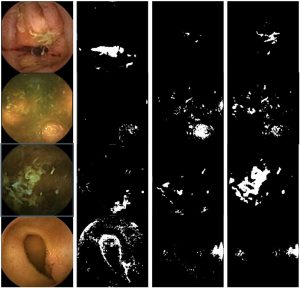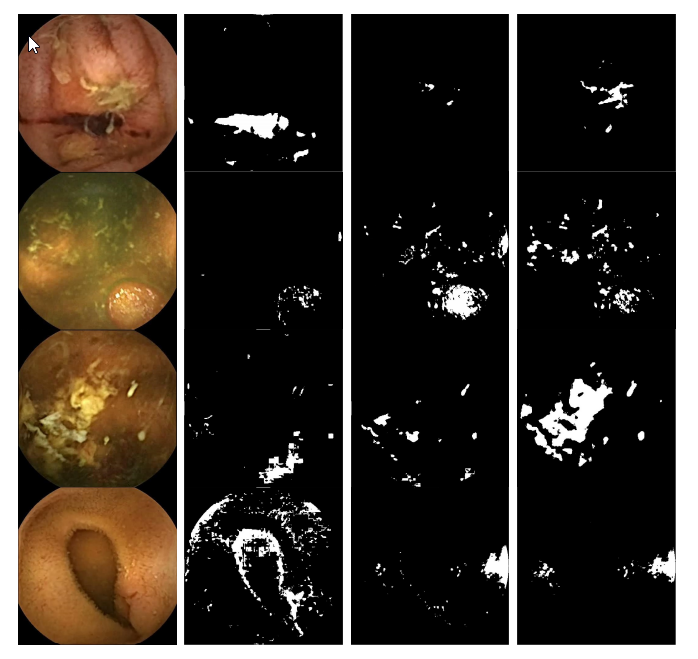
Background: Computer-aided disease detection schemes from wireless capsule endoscopy (WCE) videos have received great attention by the researchers for reducing physicians’ burden due to the time-consuming and risky manual review process. While single disease classification schemes are greatly dealt by the researchers in the past, developing a unified scheme which is capable of detecting multiple gastrointestinal (GI) diseases is very challenging due to the highly irregular behavior of diseased images in terms of color patterns. Method: In this paper, a computer-aided method is developed to detect multiple GI diseases from WCE videos utilizing linear discriminant analysis (LDA) based region of interest (ROI) separation scheme followed by a probabilistic model fitting approach. Commonly in training phase, as pixel-labeled images are available in small number, only the image-level annotations are used for detecting diseases in WCE images, whereas pixel-level knowledge, although a major source for learning the disease characteristics, is left unused. In view of learning the characteristic disease patterns from pixel-labeled images, a set of LDA models are trained which are later used to extract the salient ROI from WCE images both in training and testing stages. The intensity patterns of ROI are then modeled by a suitable probability distribution and the fitted parameters of the distribution are utilized as features in a supervised cascaded classification scheme. Results: For the purpose of validation of the proposed multi-disease detection scheme, a set of pixel-labeled images of bleeding, ulcer and tumor are used to extract the LDA models and then, a large WCE dataset is used for training and testing. A high level of accuracy is achieved even with a small number of pixel-labeled images. Conclusion: Therefore, the proposed scheme is expected to help physicians in reviewing a large number of WCE images to diagnose different GI diseases.

